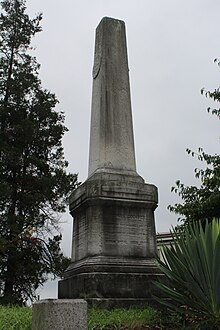Thomas Godfrey (inventor)
Thomas Godfrey (January 10, 1704 – December 1749) was a glazier and self-taught mathematician and astronomer in the Pennsylvania Colony, who invented the octant in 1730.
Godfrey accessed a copy of Isaac Newton's Philosophiæ Naturalis Principia Mathematica in Logan's library to further expand his idea.
[3] Godfrey completed development of his octant in 1730 and the accuracy of the device was tested by the captain and first mate of the Trueman on voyages to the West Indies and Newfoundland.
Logan was surprised to then see an almost identical device described as invented by John Hadley in the Philosophical Transactions of the Royal Society.
The communication including sworn affidavits signed by the Mayor of Philadelphia that Godfrey's octant was crafted by Edmund Woolley of wood on November 1730.
[10] Franklin described Godfrey at length in his Autobiography:[11] "A self taught mathematician, great in his way, and afterwards inventor of what is now call'd Hadley's Quadrant.
But he knew little out of his way, and was not a pleasing companion, as like most great mathematicians I have met with, he expected unusual precision in every thing he said, or was forever denying or distinguishing upon trifles, to the disturbance of all conversation.
[12] In 1838, John Fanning Watson reinterred the remains of Godfrey, his wife, father and mother to Laurel Hill Cemetery.
